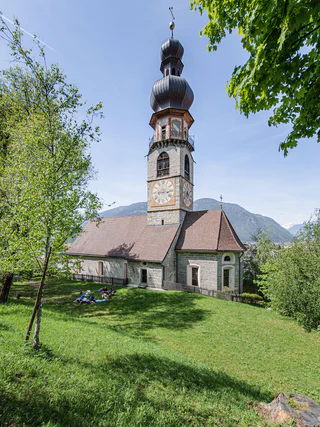
1/3
St. Katherine's Church
Brunico città/Bruneck Stadt, Bruneck/Brunico, Dolomites Region Kronplatz/Plan de Corones
Ontdek de meest fascinerende bezienswaardigheden van Bruneck. Een stad vol historie, cultuur en prachtige plekken om te verkennen.

1/3
Brunico città/Bruneck Stadt, Bruneck/Brunico, Dolomites Region Kronplatz/Plan de Corones

Villa Ottone/Uttenheim, Gais, Dolomites Region Kronplatz/Plan de Corones

1/3
Brunico città/Bruneck Stadt, Bruneck/Brunico, Dolomites Region Kronplatz/Plan de Corones

1/4
Brunico città/Bruneck Stadt, Bruneck/Brunico, Dolomites Region Kronplatz/Plan de Corones

1/2
Brunico città/Bruneck Stadt, Bruneck/Brunico, Dolomites Region Kronplatz/Plan de Corones

1/2
S. Lorenzo di Sebato/St. Lorenzen, St.Lorenzen/San Lorenzo di Sebato, Dolomites Region Kronplatz/Plan de Corones

Issengo/Issing, Pfalzen/Falzes, Dolomites Region Kronplatz/Plan de Corones

1/2
Brunico città/Bruneck Stadt, Bruneck/Brunico, Dolomites Region Kronplatz/Plan de Corones

Campolino/Lothen, St.Lorenzen/San Lorenzo di Sebato, Dolomites Region Kronplatz/Plan de Corones

1/3
Campolino/Lothen, St.Lorenzen/San Lorenzo di Sebato, Dolomites Region Kronplatz/Plan de Corones

1/2
Brunico città/Bruneck Stadt, Bruneck/Brunico, Dolomites Region Kronplatz/Plan de Corones

Campolino/Lothen, St.Lorenzen/San Lorenzo di Sebato, Dolomites Region Kronplatz/Plan de Corones

1/8
Brunico città/Bruneck Stadt, Bruneck/Brunico, Dolomites Region Kronplatz/Plan de Corones

1/8
Brunico città/Bruneck Stadt, Bruneck/Brunico, Dolomites Region Kronplatz/Plan de Corones

1/2
Brunico città/Bruneck Stadt, Bruneck/Brunico, Dolomites Region Kronplatz/Plan de Corones

1/7
Falzes/Pfalzen, Pfalzen/Falzes, Dolomites Region Kronplatz/Plan de Corones

Brunico città/Bruneck Stadt, Bruneck/Brunico, Dolomites Region Kronplatz/Plan de Corones

1/2
Brunico città/Bruneck Stadt, Bruneck/Brunico, Dolomites Region Kronplatz/Plan de Corones

1/2
Gais/Gais, Gais, Dolomites Region Kronplatz/Plan de Corones

Villa Ottone/Uttenheim, Gais, Dolomites Region Kronplatz/Plan de Corones

1/3
Villa Ottone/Uttenheim, Gais, Dolomites Region Kronplatz/Plan de Corones

1/2
Brunico città/Bruneck Stadt, Bruneck/Brunico, Dolomites Region Kronplatz/Plan de Corones

1/8
Brunico città/Bruneck Stadt, Bruneck/Brunico, Dolomites Region Kronplatz/Plan de Corones

Brunico città/Bruneck Stadt, Bruneck/Brunico, Dolomites Region Kronplatz/Plan de Corones

1/3
Brunico città/Bruneck Stadt, Bruneck/Brunico, Dolomites Region Kronplatz/Plan de Corones

1/2
Brunico città/Bruneck Stadt, Bruneck/Brunico, Dolomites Region Kronplatz/Plan de Corones

1/3
Piccolino/Pikolein, San Martin /San Martino, Dolomites Region Kronplatz/Plan de Corones

1/3
Issengo/Issing, Pfalzen/Falzes, Dolomites Region Kronplatz/Plan de Corones

Brunico città/Bruneck Stadt, Bruneck/Brunico, Dolomites Region Kronplatz/Plan de Corones

Issengo/Issing, Pfalzen/Falzes, Dolomites Region Kronplatz/Plan de Corones